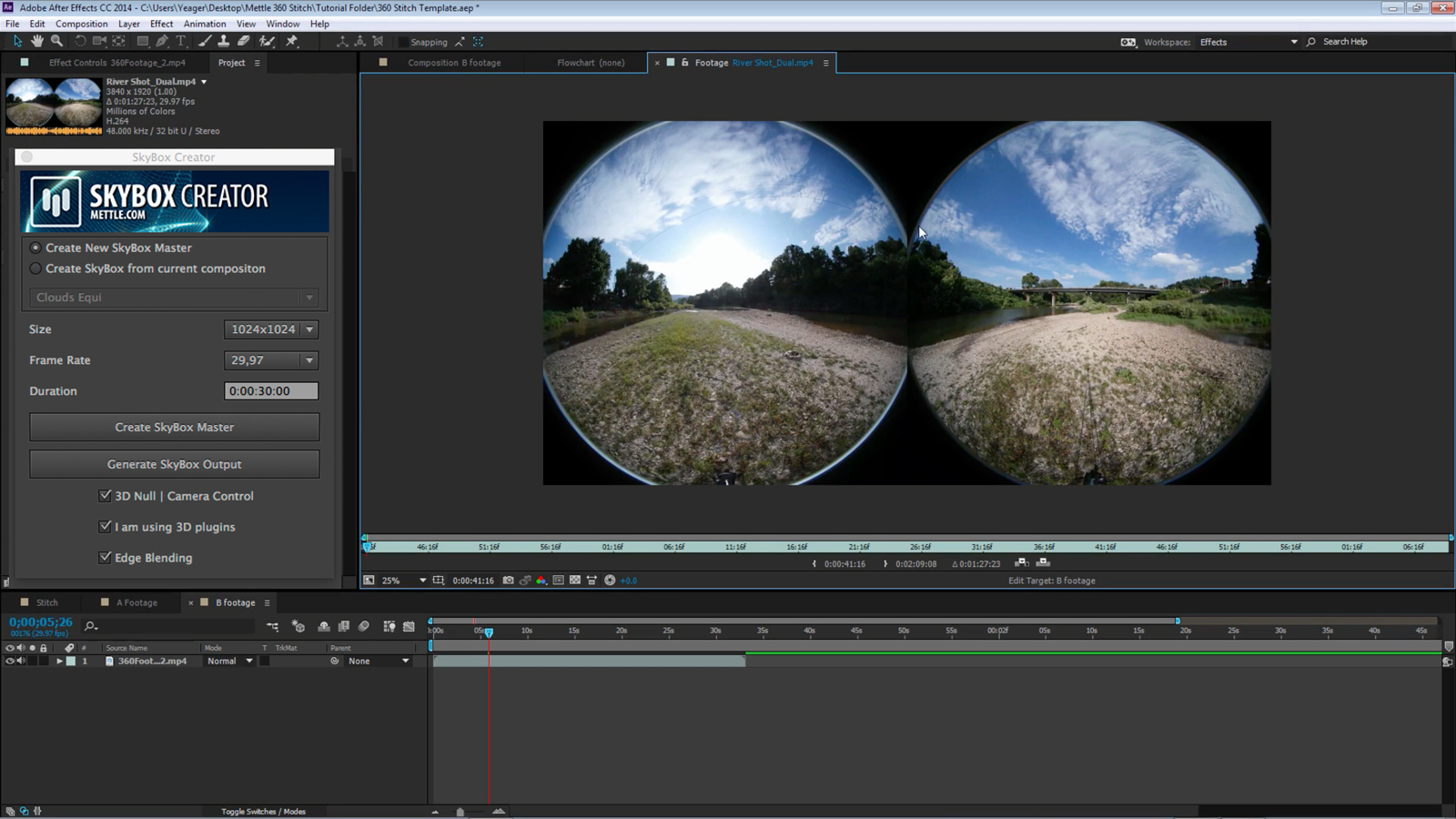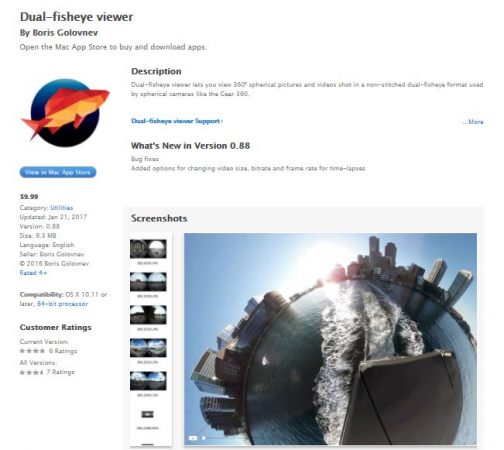
You’ll be prompted to open up Autopano Giga at this point. This image will likely look a little wonky, so you probably want to click Edit beneath it to make things look like intended. This will create an initial stitch of your video, providing a panorama preview in the right-hand window if you click a particular moment in the bottom panel’s timeline. For the most part, this will produce a clean video. Next, under the Stitch panel, make sure the lens preset is set to the correct model of GoPro camera used in the Omni Rig, and then select Stitch. To get the best effects here, a loud clap in the beginning of filming will be good to sync by audio, or twisting the camera before filming will be good to sync by motion. Sound will be more accurate if you did not take any preemptive stitching measures at the time of filming. You likely want to synchronize by sound rather than by motion. Drag the footage from all 6 cameras into the main window of AVP, and select Synchro at the top. The GoPro Omni produces the easiest footage to stitch by default.

Vuze 3D 360 footage (one file) Using Autopano with the GoPro Omni Viewing this file in a media player like VLC shows one oval corresponding to each lens, like the image on the right.
360 VIDEO STITCHING FOR MAC MP4
The Gear 360 and other few-lens cameras produce just one mp4 file. Camera rigs like the GoPro Omni or the Z Cam S1 will produce multiple mp4 files per take one for each lens, as in the image on the left.

The first thing to do is look at what kind of unstitched footage your camera produces. There are others, but they tend to be more intensive and difficult to use for little increase in quality, so we’ll be talking about Autopano for the remainder of this guide. Kolor’s Autopano is the most popular comprehensive program to stitch with manually. There are two situations, then, where you’d want to stitch manually using a more sophisticated software: Your camera doesn’t come with an automatic stitching software, or you want to have more control over making a video appear cohesive by hiding particularly tricky stitch lines. In the picture below, the subject was standing directly in the overlap between two lenses, and his face got caught in a stitch line.

The areas on either side of stitch lines might look a bit discolored in contrast to one another, because the cameras were automatically set to different light settings.

“Stitch lines” in 360 are the areas of overlap between the lenses that have been stitched together, and appear as disconnected lines that are clearly meant to be continuous. This automation makes life remarkably easier for generating a vast amount of 360 content quickly, but comes at the cost of inexact stitching.
360 VIDEO STITCHING FOR MAC SOFTWARE
The Gear 360, for example, comes with software called “ Gear 360 Action Director.” Importing footage from the camera into this software automatically stitches the video for you, no additional work necessary. Most 360 cameras have proprietary stitching software that stitch automatically in most cases. Garmin and other companies have recently demonstrated interest in creating cameras that stitch on board, meaning that this step will likely soon be technologically obsolete, but for now, we have to figure out a way to blend the lenses into one video on our own. These video files must be combined using “video stitching” software on a computer or phone before the video becomes one connected, viewable video. Different cameras have different methods of outputting footage, but usually each camera lens corresponds to a separate video file. For the time-being, footage filmed on most 360° cameras cannot be directly edited and uploaded for viewing immediately after capture.


 0 kommentar(er)
0 kommentar(er)
